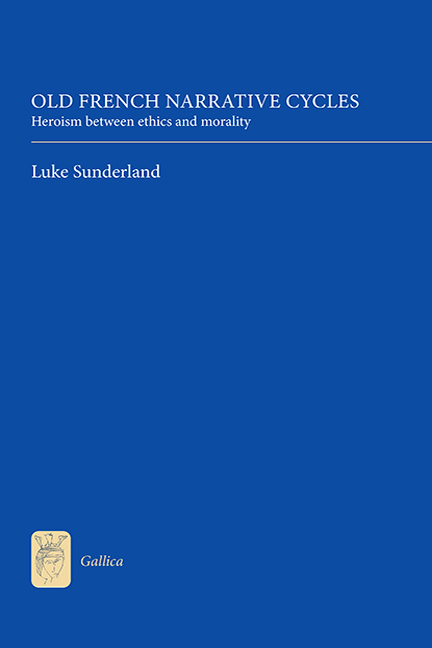Book contents
- Frontmatter
- Contents
- Dedication
- Acknowledgments
- Manuscripts of the Cycle de Guillaume
- Manuscripts of the Roman de Renart
- References and Abbreviations
- Introduction
- 1 Duty to the Geste: The Cycle de Guillaume d'Orange
- 2 Metaphor, Metonymy and Morality: The Vulgate Cycle
- 3 Responsibility to Reputation: The Prose Tristan
- 4 Ethical Evil: The Roman de Renart
- Conclusion
- Bibliography
- Index
- Miscellaneous EndMatter
4 - Ethical Evil: The Roman de Renart
Published online by Cambridge University Press: 09 May 2017
- Frontmatter
- Contents
- Dedication
- Acknowledgments
- Manuscripts of the Cycle de Guillaume
- Manuscripts of the Roman de Renart
- References and Abbreviations
- Introduction
- 1 Duty to the Geste: The Cycle de Guillaume d'Orange
- 2 Metaphor, Metonymy and Morality: The Vulgate Cycle
- 3 Responsibility to Reputation: The Prose Tristan
- 4 Ethical Evil: The Roman de Renart
- Conclusion
- Bibliography
- Index
- Miscellaneous EndMatter
Summary
The Renart is, admittedly, a slightly eccentric member of my corpus. Its characters are not humans but anthropomorphic animals; its tone is wickedly comic, and it is not normally considered a cycle. Indeed, the text is made up of a long series of chapters (or ‘branches’), each centred on one trick played by the eponymous fox hero, to get food or to escape justice. The narrator of one branch gives us a sense of the work's structure when he announces that he will tell ‘une branche et .i. sol gabet’ [one branch and just one trick] (23, 19). Each branch is like an episode of a cartoon: at the end, we are back where we started. Thus the Renart is characteristically circular: hunger reawakens, and is then sated; Renart is brought to justice, and then gets away. Accordingly, most manuscripts order the material as a loose chain of branches, without care for chronology. But a rough sequence of events is discernible, and there are two manuscripts (C and M) which take advantage of this by subsuming the material to a linear, biographical framework, thus realizing the cyclical potential immanent to the tradition. They might therefore be termed Cycle de Renart manuscripts. This chapter will consider the material as it appears in one of them, C.
The Renart is often read as satire of feudal society and especially its legal systems, or as parody of epic or romance. But in C, the text can also be read as a parody of the cycle, and in particular of the epic cycle in the form of heroic biography. C's narrative is broadly chronological: it opens with an ‘Enfances’ text that recalls the Enfances Guillaume; it contains an abortive ending in the shape of a false ‘Moniage’ in Branch 26, and finally ends with the ‘Mort Renart’. Moreover, like the Cycle de Guillaume, the Renart grew as a collective, collaborative project, with early branches inspiring subsequent authors to write others using the same characters and themes in an open-ended, rhizomatic process. Renart material began to circulate in eclectic form in the twelfth century, although some branches clearly formed a sequence with others. Then in the early thirteenth century branches with clear cyclical intent appeared, like the ‘Enfances’ and ‘Mort’; later in the thirteenth century the material was drawn together to form a cycle.
- Type
- Chapter
- Information
- Old French Narrative CyclesHeroism between Ethics and Morality, pp. 138 - 175Publisher: Boydell & BrewerPrint publication year: 2010



